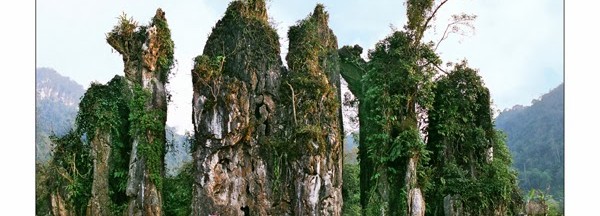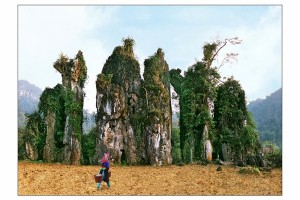The Tourism Development Master Plan for Dong Van Karst Plateau has just been approved by the Prime Minister with a validity until 2025 but with a vision until 2030.
The tourism development plan has target revenues for different time frames: of 1.3 trillion VND (57.3 million USD) by 2020, 2.8 trillion VND (123.4 million USD) by 2025 and 5 trillion VND (220 million USD) by 2030.
The master plan also eyed certain areas to be developed into major tourism markets such as the Red River Delta provinces; mid-land and mountainous localities; and some cities and provinces in the Central and Southern regions like Da Nang, Can Tho and Ho Chi Minh City.
Western Europe, North America, Japan, the Republic of Korea and ASEAN are to be given priority when it comes to international tourism because they are seen to be the big spenders when travelling.
Geological tourism, community-based tourism, nature tourism, adventure travel and discovery tourism are the focus because they have been the trend even in other countries for the last few years.
The plan also outlined five tourism zones: a cultural park in Xeo Sa Lung Village, Pai Lung Commune, Meo Vac District; Ma Pi Leng adventure travel zone at Tu San abyss; Thai An reservoir tourism site in Thain An Commune, Quan Ba District; Quan Ba Resort and healthcare site in Quyet Tien communes, Quan Ba District; and Nam Dam resort site in Quan Ba Communte, Quan Ba District.
The master plan will also put emphasis on top-of-the-line accommodations and entertainment.
Dong Van Karst Plateau is located at the Northern mountainous area of Ha Giang Province with a population of about 250,000 and a total land area of 2,356 kilometre square, 80% of the latter which is limestone. It is known for its rich natural resources and historical value such as thousands of fossils of pre-historic animals as old as 400 – 600 million years ago. 17 ethnic groups live in the area with distinct cultures that date back to hundreds of years ago. Just recently, 14 archaeological sites were unearthed in the districts of Dong Van, Meo Vac and Yen Minh which displayed hundreds of relics believed to have come from the pre-historic and proto-historic eras.
Dong Van Karst Plateau is such an important national tourism site that in 2010, it was acknowledged by UNESCO as a member of the Global Network of National Geoparks. It was the first geological park in Vietnam and the second in Southeast Asia. It was recognized again as such from 2015 – 2018.
Visitors to Dong Van Karst Plateau are expected to increase in the coming years. By 2020, 800,000 tourists are seen to arrive at the national tourism site, 130,000 of those are foreigners. By 2025, 950,000 visitors are eyed to visit, 250,000 of the number to be international tourists. By 2030, 1.1 million tourists are expected to visit Dong Van Karst Plateau, over 380,000 of which come from different countries.

